A little over two years ago, we announced that Hackaday became a part of Supplyframe. This was a natural fit: both sides are comprised of hardware engineers, computer scientists and hackers alike. We immediately pooled forces and set out to make Hackaday bigger, with a broader mission. So far, it has been an amazing journey: Hackaday.io is approaching 100,000 registered users, The Hackaday Prize is in its second year, and the Hackaday Store is about to fulfill its 5,000th order.
The main theme behind all of this is fostering collaboration, learning, and providing incentives for everyone in the community to stop procrastinating and try to build something amazing. Hackaday.com is here to inspire, Hackaday.io to help develop projects in the open, and the Hackaday Store is to provide a way to turn passion projects into a self-sustainable lifestyle. While the road to community-powered innovation might not be easy, it’s something we’re all incredibly passionate about, and will continue investing in to further this goal.
With that in mind, we’re very excited to announce that everyone’s favorite hardware marketplace – Tindie, has been acquired by Supplyframe and will be joining the Hackaday family! Apart from the fact that most of us are personal fans of the website, we believe that Tindie fills an important gap in helping projects cross the chasm between prototype and initial production. Crowdfunding provides access to capital for some (and access to laughs for others), but it’s not always the way to go. You might not be ready to quit your day job or take on a project full-time. You might be working on rev1 of the project and want to try the “lean manufacturing” thing. Or maybe you’re building something for your own purposes and have some extras lying around. Tindie is a platform that has helped launch many such projects, and we’re incredibly lucky to have it be a part of Hackaday.
Now what?
Naturally, the question that’s on everyone’s mind is, what happens next? Are we going to mess things up? Paint Tindie in black? Change the fee structure? While we have ideas on things that we could help with, our main goal will be making sure that the Tindie community continues to thrive. The only changes we’re interested in are the ones that make the community stronger. We are fascinated with the challenges surrounding the supply chain and will be looking into tools to help sellers improve margins and ship better products. Hackaday.io and Tindie combined represent the world’s largest repository of (working) Open Hardware products, so we will be looking into more closely integrating the two. We will also make efforts to grow the overall Tindie audience, as every new buyer helps move the community forward.
All of these are some of the ideas, but we’re ultimately looking at you for guidance: things we should do, problems we should attack, dreams of future capabilities.
Wish us luck in this new adventure.
Aleksandar Bradic
CTO
Supplyframe



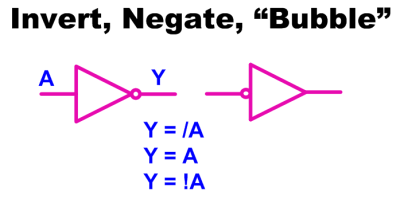 The most simple piece of logic is inversion; making a high change to low or a low change to high. Shown are a couple of ways to write an inversion including the ubiquitous “bubble” that we can apply almost anywhere to imply an inversion or a “True Low”. If it was a one it is now a zero, where it was a low it is now a high, and where it was true it is now untrue.
The most simple piece of logic is inversion; making a high change to low or a low change to high. Shown are a couple of ways to write an inversion including the ubiquitous “bubble” that we can apply almost anywhere to imply an inversion or a “True Low”. If it was a one it is now a zero, where it was a low it is now a high, and where it was true it is now untrue.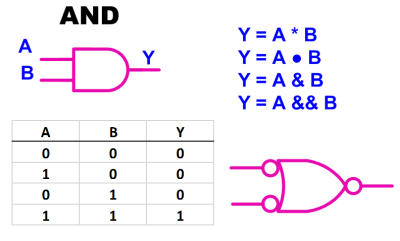 Moving on to the AND gate we see a simple truth table, also known as a Boolean Table, where it describes the function of “A AND B”. This is also our first opportunity to see the application of an alternate symbol. In this case a “low OR a low yields a low”
Moving on to the AND gate we see a simple truth table, also known as a Boolean Table, where it describes the function of “A AND B”. This is also our first opportunity to see the application of an alternate symbol. In this case a “low OR a low yields a low”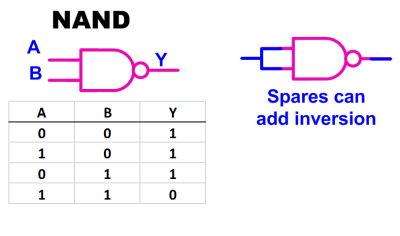 Most if not all of the standard logic blocks come in an inverted form also such as the NAND gate shown here. The ability to invert logic functions is so useful in real life that I probably used at least three times the number of NAND gates as regular AND gates when doing medium or larger system design. The useful inversion can occur as spares or in line with the logic.
Most if not all of the standard logic blocks come in an inverted form also such as the NAND gate shown here. The ability to invert logic functions is so useful in real life that I probably used at least three times the number of NAND gates as regular AND gates when doing medium or larger system design. The useful inversion can occur as spares or in line with the logic.

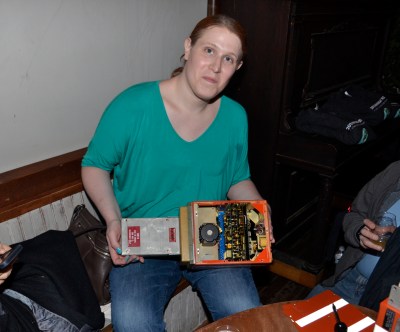 While this meetup was really just a meet-and-greet pregame for the TechCrunch hackathon, and not a proper ‘bring a hack’, that didn’t stop a few people from toting out some very cool hardware. [
While this meetup was really just a meet-and-greet pregame for the TechCrunch hackathon, and not a proper ‘bring a hack’, that didn’t stop a few people from toting out some very cool hardware. [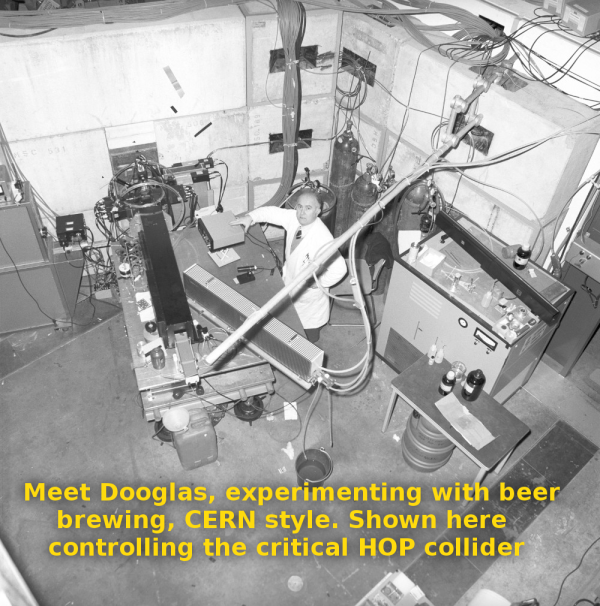
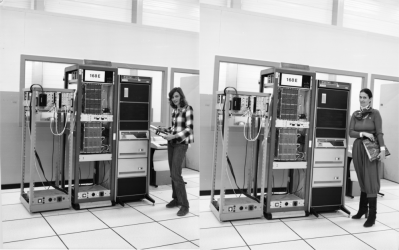

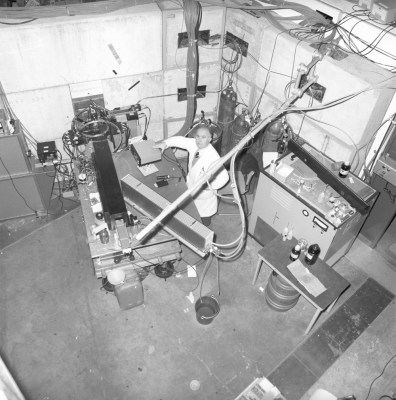

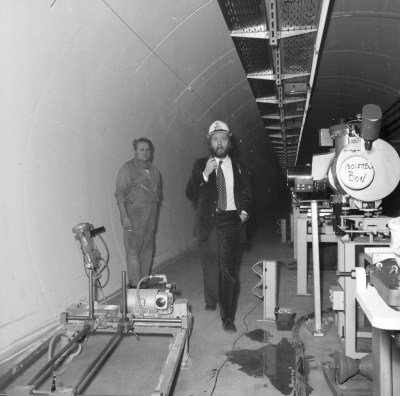 We’re not done searching out they mysteries of CERN’s history.
We’re not done searching out they mysteries of CERN’s history. 








